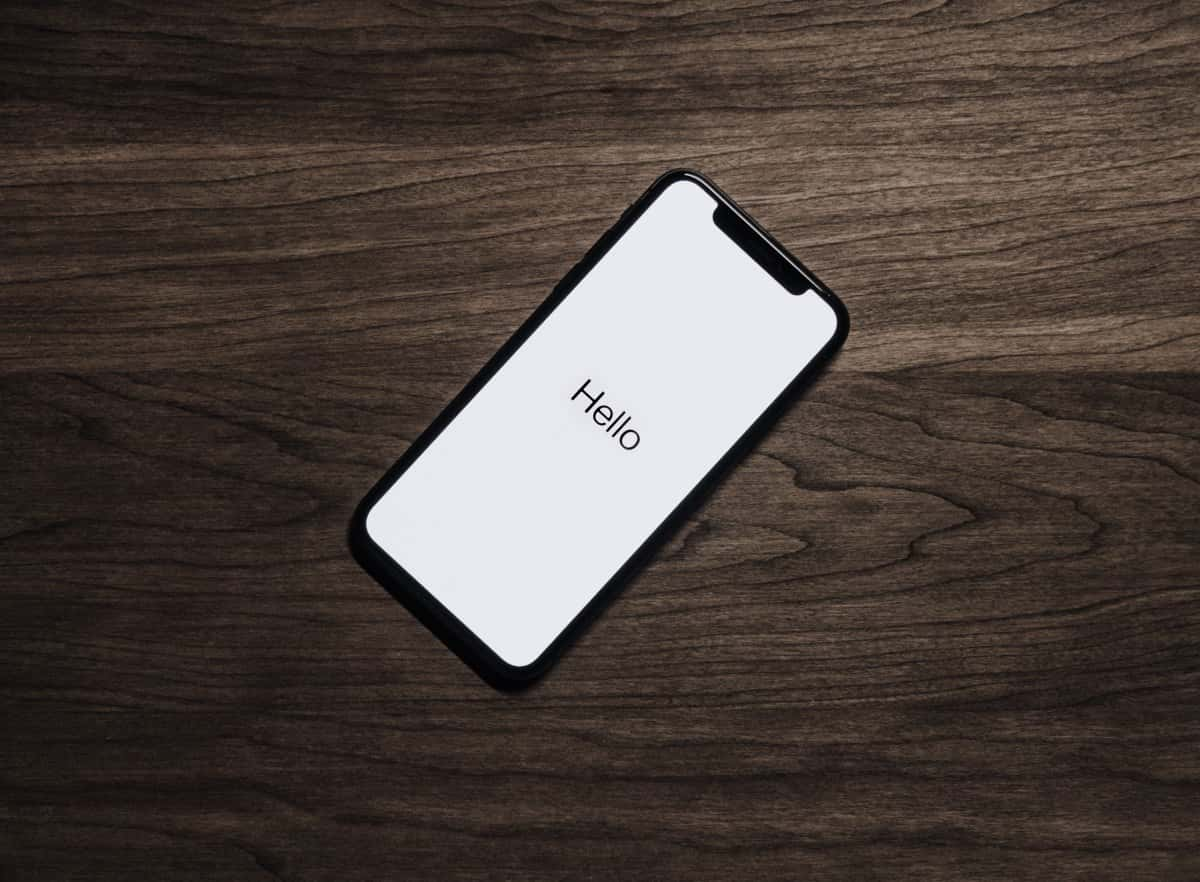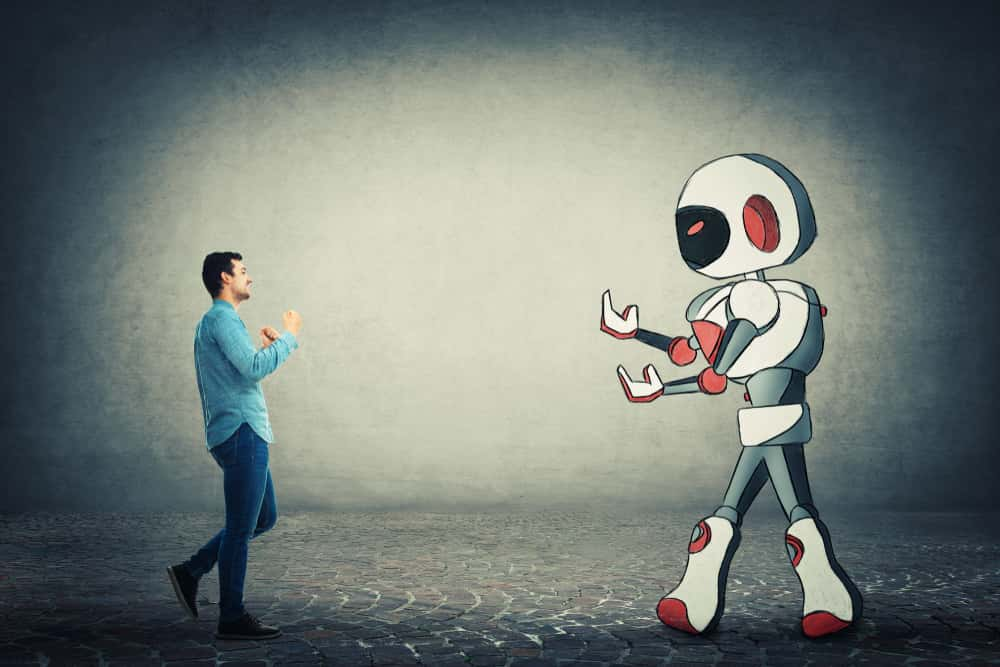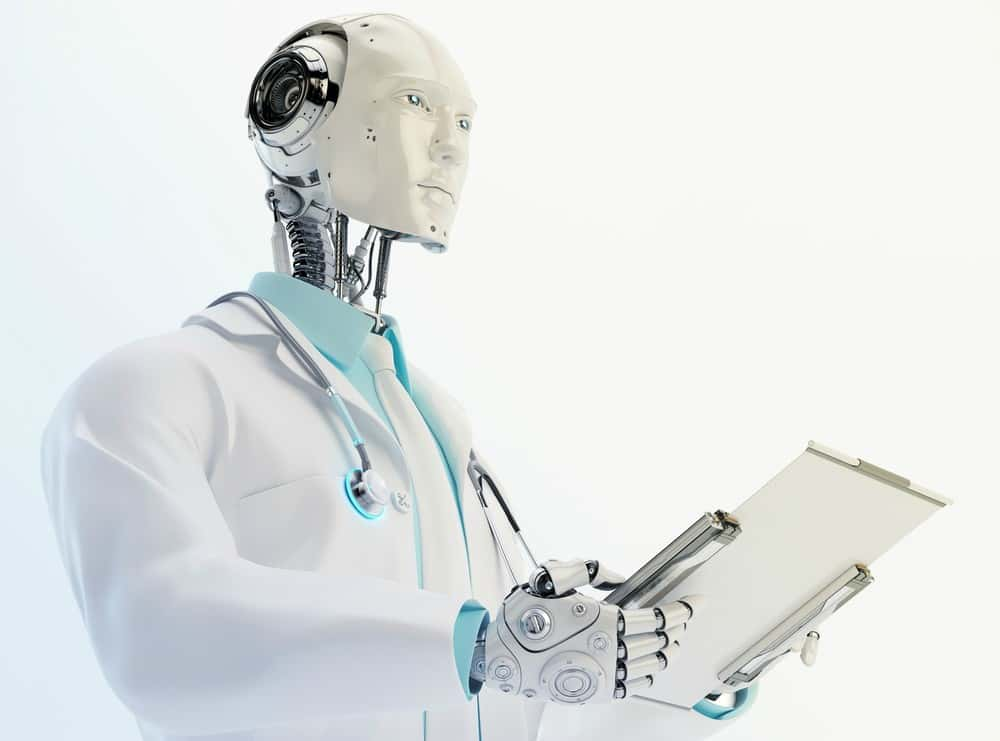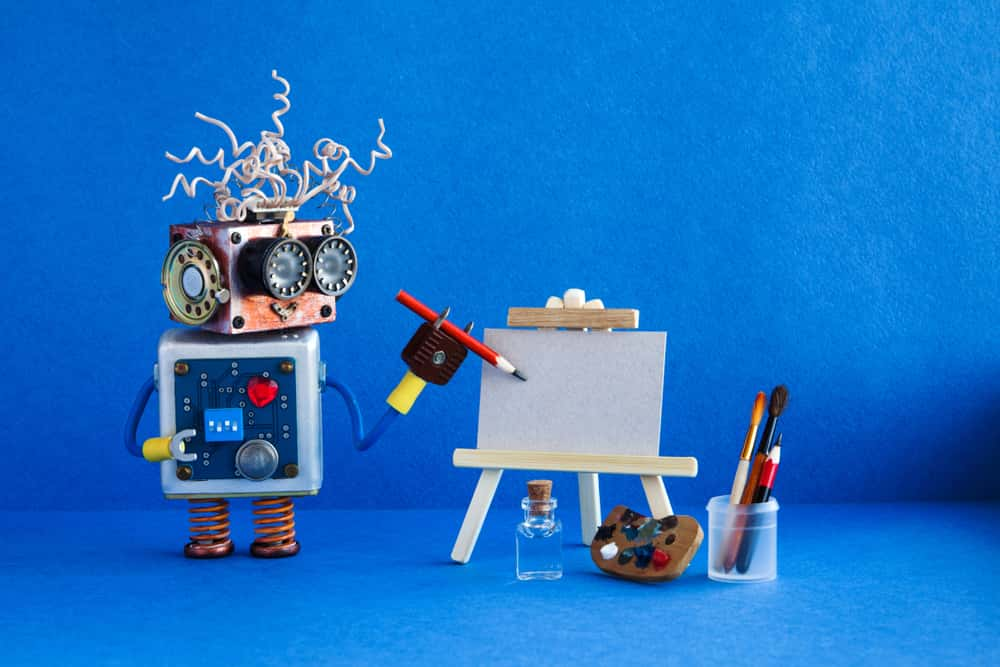“Hasta la vista, Baby” –The Terminator
People have been dreaming about Artificial Intelligence for hundreds, if not thousands of years. Well, it’s starting to feel like the future is actually here, and AI can be seen almost everyone nowadays. So how should you feel about it? Here are 42 facts about the past, present and future of artificial intelligence to help you decide for yourself.
Artificial Intelligence Facts
42. Mythical Robots
In Ancient Greek mythology, the blacksmith god Hephaestus was believed to have built what were essentially robots. His “automatons,” as they were called, were crafted from metal and designed to perform different tasks for him or other gods. They took many forms, including men, women, eagles, and horses.
41. What’s It All Mean?
Many different definitions of artificial intelligence exist, and not everyone agrees on what the term actually means. Merriam-Webster says that AI is “the capability of a machine to imitate intelligent human behavior,” while others have defined it as the ability for a machine to “think” or for a machine to act in a way that, if a human acted in that way, would be called intelligence. Take your pick.
40. Misnomer
To make matters even more confusing, some people believe that the term “artificial intelligence” itself is misleading and inaccurate. The technological research firm Gartner prefers the term “smart machines,” as they believe “artificial intelligence” places unreasonable expectations on what the technology is designed to do.
39. Name Game
Professor John McCarthy of Stanford University was an early computer scientist who developed the programming language LISP that’s still used in AIs today. But as if that wasn’t a big enough addition to the world of AI, he also coined the term “artificial intelligence” itself in 1955.
38. The Imitation Game
What’s today called “The Turing Test” was developed by the groundbreaking computer scientist Alan Turing and was originally called “The Imitation Game.” The hypothetical test has a person conversing with both a human and a computer, without seeing either one. If the person can’t tell which is the computer and which is the human, then the computer passed the test. This idea—that a computer can believably mimic human behavior—is still used today as a benchmark robot intelligence.
37. Aced It!
It’s a fairly commonly held belief that a computer passing the Turing test will be a dramatic and dangerous threshold, but don’t worry—one already has and the world is still standing. The robot’s name was Eugene Goostman, and its developers designed it to sound like a teenage boy. Their reasoning was that any small mistakes the AI might make would be more believable coming from a 13-year-old than from an adult.
36. Total Amateur
One of the first AI programmers was Christopher Strachey, a teacher and an amateur computer programmer from England. In the fifties, he began work on his first program: a rudimentary artificial intelligence that could play checkers. Because he was so inexperienced, he didn’t know that this was a more complicated task than had been attempted before, and he ended up writing what was at that time one of the longest ever computer programs, and one of the first examples of artificial intelligence.
 Wikimedia Commons, Marcin Wichary
Wikimedia Commons, Marcin Wichary
35. A Face Only a Mother Could Love
In the late '90s, scientists at MIT developed the robot Kismet, an early attempt to build an AI that could interpret human behavior. The goal was to create a robot that could identify and mimic human facial expressions like a baby could. The research team gave Kismet a mouth that could smile and frown, ears and eyes with eyelids and eyebrows to display emotions. The experiment was mostly a success, but Kismet was still pretty terrifying to look at.
34. I Don’t Need You at All Anymore
Researchers at Pierre and Marie Curie University in Paris built a robot that could repair itself/adapt if it was broken. The six-legged robot can notice when its performance decreases and run a series of tests on itself to find out what the problem is. It can manage to keep moving even if two of its legs are missing.

Sign up to our newsletter.
History’s most fascinating stories and darkest secrets, delivered to your inbox daily. Making distraction rewarding since 2017.
33. Plenty of Fish in the Sea
Taking inspiration from schooling behavior in fish, the Collective Cognitive Robots team, or CoCoRo, has developed a series of underwater robots that communicate with each other as they move through the water. Using LED lights, they can, among other things, locate each other, form groups and send out scouting robots to gather information and return to spread it to the rest of the “school.”
32. Robot Hotel
In Japan, there’s a hotel that’s almost completely staffed by animatronic robots. It’s fittingly called “Weird Hotel,” and despite the gimmicky premise, the owner says that the robots are a legitimate way to conserve operating costs and keep prices down.
31. Big Spending
Artificial Intelligence is big business. In 2015, companies spent around $8.5 billion developing different AI programs and systems. By the year 2020, that number is expected to balloon to $47 billion.
30. Madame Robot
Alexa, Siri, Cortana, Google Now—what’s the link between these common AI systems? All of them have a female voice. There doesn’t seem to be one specific reason that the majority of AIs are designed as female, but people have hypothesized it’s because the teams who work on AI are mostly composed of men, and so they, consciously or not, either choose a voice that they are more attracted to or that they are less threatened by.
29. Sit. Stay. Kill All Humans.
People have dreamed about robot pets for decades, but outside of the occasional toy fad it hasn’t become a reality… yet. Some scientists believe that within the next ten to twenty years, robot pets will become more and more common, since they don’t need food, space or exercise, and they can still trigger emotional responses in their owners just like real pets do.
28. They Took Our Jerbs!
Already, robots are taking over jobs that have been historically done by people, but many people believe this is going to seriously ramp up in the coming years. One study estimated that 30% of the tasks in 60% of all jobs could be automated. A Chinese venture capitalist named Kai-Fu Lee has even predicted that 50% of all jobs will be done by robots within a decade.
27. Can I Help You, Sir?
Although AI workers are expected to become more and more common in the near future, that doesn’t mean that all jobs are expected to disappear. Experts don’t see jobs like therapist, doctor, nutritionist or priest being taken over by robots any time soon. Most of the jobs that are expected to be taken over by robots are those that require only a high-school degree, such as cashiers, retail salespeople, fast-food workers, and drivers.
26. Tech Support
If you’ve needed online customer service help from a big technology company, you’ve most likely spoken to a robot. As a forerunner to what’s likely coming, many companies today use chatbots to perform basic customer service and tech support online. Most still use on-call tech specialists for when the AI can’t help, but who knows what the future holds?
25. Who Watches the Robots?
Not only do many people see robots taking over a huge amount of jobs that are currently done by people, they have also predicted one job that will help replace some of those that will be lost: monitoring all those new robots. It’s been estimated that one-fifth of companies in the future will employ people whose job is exclusively to watch over the AIs that those companies will be using.
24. Legal Grey Areas
With AI becoming more and more intelligent, some governments have already begun to ponder the concept of rights for robots. In early 2017, a European parliamentary committee voted on a report that outlined some of the complex legal issues related to AI that could soon arise. One example of these issues is the question of who owns the rights to a patent developed by a robot? The person who owns the robot, the person who designed the robot, or the robot itself? The answers to questions like these might soon become very important.
23. Take My Wife(Bot)
It’s common for science fiction to tackle the conundrum of human-robot relationships. You can find examples in movies like Her, books like Do Androids Dream of Electric Sheep? and even TV shows like Futurama. But although many people still think the idea is creepy at best and immoral at worst, it might not be that far from reality. An AI researcher from the Netherlands predicts that human-robot relationships will start becoming recognized by the law by the year 2050.
22. Strengths and Weaknesses
Although it can feel like computers are getting ready to take over the world, they’re not as all powerful as they seem, thanks to something called Moravec’s Paradox. Essentially, it states that while computers are really good at some things, they’re also really bad at others. For example, computers can easily do extremely complex calculations almost instantly, but a one-year-old child can easily outperform a computer when it comes to basic motor skills or dexterity.
21. Extra! Extra! Read All A-Bot It!
If you’re counting the jobs that a currently threatened by AI, you can add “journalist” to that list. Several news outlets, like the Los Angeles Times and The Washington Post are already utilizing news-writing robots that can cover topics ranging from the weather to politics.
20. Market Oracle
Depending on what financial firm you decide to work with, there’s a chance that your investing choices will be made with input from a computer. Several firms exist today that use artificial intelligence to predict market changes, and to invest accordingly.
19. “Patch” Adams.
(Get it? Patch? Like a computer… never mind) IBM has developed an artificial intelligence named Watson that can help doctors diagnose cancer. Similar to other AI prediction programs, Watson can scan millions of cases and compare patient information to this vast database, something that human doctors simply can’t manage. Although Watson has not revolutionized medicine as quickly as IBM hoped, the program is still considered to be in its early stages, and could feasibly revolutionize cancer diagnosis in the near future.
18. I Know That Face
The iPhone X allows people to unlock their phone by just showing their face, but that’s nothing compared to Kuri, a robot assistant made by a company called Mayfield Robotics. Kuri can control your music and TV, look after your pets and even act as a personal documentarian at family events. But while lots of smart-home devices can do all that, Kuri can recognize the people in your home, and it even smiles when it sees a familiar face, thanks to HD cameras and facial recognition technology. Plus, it’s adorable.
17. But Can it Get Me Coffee?
A company called X.AI has thrown it’s hat in the AI assistant ring with it’s program “Amy.” Amy is able to keep track of your personal calendar and emails your work contacts to set up meetings at times that work for you. Each email is simply signed “Amy,” and if you didn’t know better, you’d think you were corresponding with a regular human assistant.
16. Name That _____
Amazon has developed an image analysis AI program that they call Rekognition. It’s so good that it can tell a person’s emotions, identify what objects are in a photo, and even identify different dog breeds, all just from a photo. It also says, on a scale of 1 to 100, how sure it is that its guesses are right.
15. That’s So Deep
Some of the more advanced examples of AI today use something called “deep learning.” By using knowledge of the human brain and how it’s structured, computer scientists have been able to create algorithms called “neural networks” that are far more capable than earlier forms of artificial intelligence. Most examples of machine learning today utilize these neural networks.
14. Gaze into my Crystal Circuits
An AI supercomputer called Nautilus has proven to be able to predict the future… sort of. It reads literally millions of news reports from all over the world, analyzes them, and uses that information to extrapolate what’s going to happen next. It actually managed to predict the Arab Spring uprising and it gave a surprisingly close guess as to the whereabouts of Osama Bin Laden.
13. Electronic Music
Music comes from the heart, right? Well, maybe not always. Another Google AI product, called NSynth, uses a neural network to analyze thousands of songs and creates its own original music.
12. Computers Can Even Play Your Games for You
Video games have had computer-controlled bots for decades, but researchers are now able to create AIs that are able to learn how to play by themselves. By utilizing neural networks, these programs are able to conquer entire games through a process of trial and error. These programs have mastered everything from more basic retro games like Super Mario Brothers right up to complex competitive eSports like Dota 2.
11. Ancient Strategies, Modern Methods
Games like chess and the even older, more complex Chinese game Go, have tested the strategic thinking of people for centuries, but they were among the first places that researchers went to test their AI programs. The AI Deep Blue managed to beat the world champion Garry Kasparov at chess in 1997, and more recently programs like Google’s AlphaGo has beaten the some of the world’s top Go players.
10. Ante Up
Poker is just as much a game about knowing your opponent as it is about knowing your cards. For that reason, it’s been assumed that computers won’t be able to outperform humans at poker like they have been shown to with games like chess. But that’s already being proven wrong—an AI placed 4th at a week long No-Limit Texas Hold ‘em tournament in 2015, and researchers think that robots will be topping humans by 2020.
9. Pictionary Champion
If you’re wondering if someone has created an AI that can play Pictionary, the answer is yes. People at Google (of course) have used their Deep Learning neural network tools to create a game called Quick, Draw! In the game, you’re asked to draw a doodle, and Google’s AI is able to guess what it is before you’re even done.
8. Inspiring Technology
Spike Jonze got the idea for his movie Her—about a man who falls in love with an AI operating system—all the way back in the early 2000s when he tried out an early chatbot for the first time. It was an instant messaging program that you could talk to. Although Jonze quickly realized that the technology wasn’t very realistic yet, it was enough to get him thinking about the future of human/robot interaction, and the idea eventually bloomed into his Oscar-winning screenplay.
 Getty Images
Getty Images
7. Lit Fam
In 2016, Microsoft unleashed an AI chatbot they called Tay on Twitter. The goal was to use a neural network to interact with people on the platform and to create an account that sounded like a millennial. Unfortunately, Microsoft overestimated the quality of discourse on Twitter, and within a day Tay was trolling people with racist comments and conspiracy theories.
6. A Bot Loyal to Its Government
In a similar experiment to “Tay,” Microsoft also developed a Chinese speaking chatbot called Xiaoice for the social media platforms WeChat and Weibo. Once again, the idea was that the AI’s neural network would learn how to interact with people through analyzing conversations, news and images. Unsurprisingly then, based on the Chinese government’s tight-lipped nature, Xiaoice has learned to dodge questions and become defensive if you ask it about things like the Dalai Lama, the Tiananmen Square Protests or President Xi Jinping.
5. A Bright Future
Not every AI being developed is for business or recreation. In Kenya, conservationists are using an AI called “PAWS” (Protection Assistant for Wildlife Security) to help protect animals and stop illegal poaching. PAWS analyzes data about poachers past behavior and uses it to help predict where they’re likely to go next.
4. Anything You can do I can do Better!
Even though the world’s most complicated AIs are capable of some unbelievable feats, believe it or not, the human brain is still far more complex than any supercomputer we’ve created. But with way that computers are growing exponentially more powerful, that probably won’t be the case for long. It’s hypothesized that within the next few decades, computers will match, and then exceed human intelligence. Some scientists, most famously the futurist Ray Kurzweil, are calling that event “The Singularity,” and they predict that human civilization will be completely altered by it.
3. Reason to Worry?
It seems like artificial intelligence is the future, but should we be concerned about it? According to a lot of very smart people, like Elon Musk and Bill Gates, we absolutely should. Musk said on twitter that AI is more dangerous than North Korea, while Gates said in a Reddit AMA that he’s very concerned about it in the long term.
2. High Risk, High Reward
When asked about AI at the opening of The Centre for the Future of Intelligence in England, Stephen Hawking offered his take on the future of the technology: “In short, the rise of powerful AI will be either the best, or the worst thing, ever to happen to humanity. We do not yet know which.” Let’s all hope for the former!
1. Batteries Not Included
There's a controversial AI line of male sex robots that are intended to hit the market next year that will actually be able to have non-stop sex until they run out of batteries.
Sources: 1, 2, 3, 4, 5, 6, 7, 8, 9, 10, 11, 12, 13, 14, 15, 16, 17, 18, 19, 20, 21, 22, 23, 24, 25, 26, 27, 28, 29, 30, 31, 32, 33, 34, 35, 36, 37, 38, 39, 40, 41, 42, 43, 44, 45, 46, 47, 48, 49, 50, 51, 52, 53, 54, 55, 56, 57, 58, 59, 60, 61, 62, 63



















































